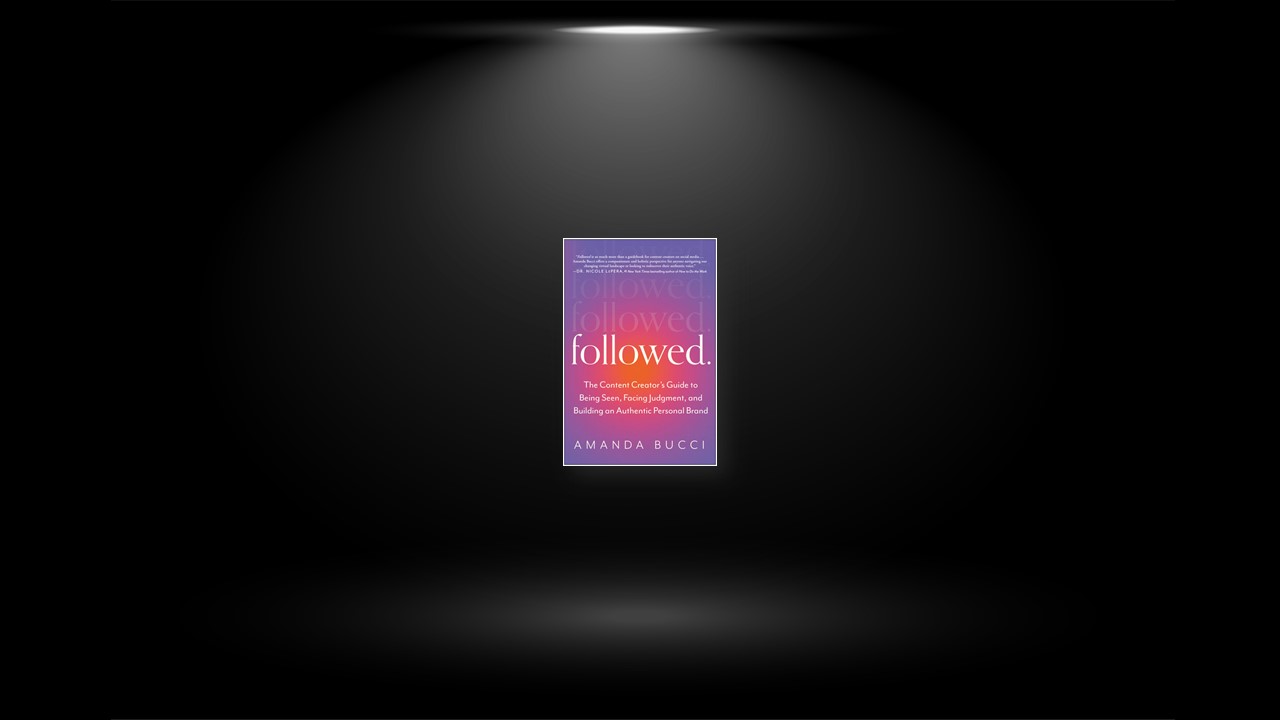Embodying Your Inner Content Creator
Consumption and comparison go hand in hand; it’s a cycle where one feeds the other. It starts out with mindless scrolling and consuming other people’s content. Before you know it, you’re in “comparison mode” and looking around at what everyone else is creating, wondering whether your content is better or worse. It’s playing a game of trying to be the best and doing what your mind believes will make you better. Originality and authentic creativity won’t be birthed from this place. Try muting other accounts, turning your phone off, or taking breaks from social media to recenter yourself.
Social media spaces are an open playground for your expression. They feel restricted for many reasons, especially when we’re disconnected from our own inner magic. Cut out the noise. Go within.
Connect Just You And Your Imagination
How can you create room for the playful parts of you? The funny parts of you? The sexy parts of you? The philosophical parts of you? Do you have graphic-design formats you can pour yourself into? Fonts and colors that make you come alive? Photo-shoot outfits that allow you to be expressive? Ideas and messaging that flow from your fingertips like lightning? Or are you stuck in the small, restricted boxes with a sleepy, safe brand and content formats that feel limiting and small? Find more ways to play with your content and creativity—and watch more of your own authentic expression start to feel more comfortable coming out of its shell.
Keeping Up with the Influencers
The starting point for most of us is caring what other people think of us. That’s okay—and completely normal. On a deep level, humans crave the approval of our parents, our mentors, our peers, and our audiences because it reminds us that we belong and that we’re accepted. But no matter what you achieve on the path to keeping up with those expectations and impossible standards, one lesson you’ll inevitably learn is that—no matter what you do—you cannot please everybody.
Although it’s an emotional challenge to deal with people not liking you or accepting you in whatever ways you feel are best on social media, it’s one of the most worthwhile paths to recognize that just existing—exactly as you are—is going to create contrast for someone out there. Maybe you used to be an alcoholic and AA saved you, but you ended up finding that some of the AA twelve-step process doesn’t fully align with you, leading you to seek other modalities of healing, and now you can drink or use other substances in moderation. Perhaps you built an entire YouTube channel on being a vegan, only to later realize that veganism doesn’t align with your body’s physiological needs and health—so you decided to integrate meat back into your diet for health purposes.
In both of these situations, the Creator embarks on a path of authentic growth and thriving, but some of their audience members may feel upset, judgmental, or critical of that pathway if it directly conflicts with their own beliefs. Humans are complex beings—and this kind of nuance and complexity is coming out from Creators more and more the longer we’re online and growing as people.
Rewriting Your Social Media Narrative
Step 1: Unfollow or Unsubscribe from Accounts That Don’t Feel like a “Hell Yes”
For this first step, think of it as Marie Kondo’s KonMari method of organizing, which emphasizes decluttering and removing items that no longer resonate—and only keeping what “sparks joy.” To apply Kondo’s method to your social media, remove the accounts in your feed that don’t “spark joy,” to borrow Kondo’s phrasing.
If you’re following an account that does not leave you feeling inspired, educated, entertained, or supported in your journey, there’s no need for it to take up space in your feed. When you follow accounts you no longer resonate with, feel guilty unfollowing, or are following for the “candy” but are left with no nourishment, spending hours a day on social media apps will always leave you feeling drained.
Step 2: Mute Accounts You Want to Stay Connected to Without Consuming Their Content
Muting accounts is a strategic move, allowing you to stop consuming someone’s regular updates and activity without them knowing. You may want to stay in contact and connection, or perhaps you’re not ready to have a conversation about a public unfollow. That’s perfectly fine! Muting is great for maybe an ex-boyfriend or your best friend from college, where you have history and a connection but don’t feel the need to see every post and story they make. Perhaps you follow a business or influencer to remind yourself to go back and buy products they advertise, but you don’t want to have their posts popping up on your feed midday when you’re trying to minimize spending. All good—and quite smart, in fact.
Step 3. Diversify Your Feed for Education and Growth
One of the largest benefits of social media is being able to essentially receive a passive education through short-form content on a daily basis. TikTok doesn’t necessarily replace formal education, but how much have you learned from finding accounts entirely outside of your niche that shared educational content you were interested in? A fantastic way to take advantage of the learning you can receive from online Creators is to follow people who don’t fit within your usual echo chamber of accounts and viewpoints.
Step 4: Nourish Yourself by Interacting with Accounts That Feel Light and Playful
The reason the phrase “We are the five people we spend the most time with” rings so true for so many people is because we don’t generally experience much diversity of thought outside of those people closest to us. Even if you don’t believe you are easily influenced, our subconscious minds are designed to constantly take in information to develop our overall worldview and individual perspective. Similarly, your reality is heavily influenced by the people you follow the most regularly.
Doing this helps you have a healthier, more functional relationship with the social media platforms you’re on. Go enjoy those TikTok dance videos or acting skits. Listen to structured and thought-provoking interviews on a new podcast you found or simply enjoy puppy videos!
Embracing Your Social Media Shadow
Shadow work is an inner-healing practice that includes intentionally putting in effort to go up into that attic where the dark, unconscious parts of your psyche live—and find out exactly what is there in order to bring it back down to the living room of your conscious awareness, clean it up, and integrate it into your self-image. This can be done through journaling and self-reflection questions that are ultimately focused around one question:
What Do I Not Want To See?
As a Content Creator, you will always have parts of you that you’ll feel called to share more of that may feel easier to just . . . hide. But when you choose not to hide, you move closer to taking full ownership of the parts of yourself you previously felt were shameful. Consider the incredible Creators who have shared images of themselves in swimsuits with their tummy rolls, stretch marks, and makeup-free faces. That may have been easy for some, but for many, it absolutely required a lot of inner work, therapy, community support, and finally releasing the narrative that they are not defined by what their bodies look like before they could even consider posting these pictures unapologetically.
Another important element of the shadow is that there can be a “shadow side” or “shadow expression” to everything. Let’s look at marketers, for example. When marketers are at their best, they’re creating visibility and awareness for brands through different strategies, language, images, videos, and audio to attract and sell to the correct customers. There’s nothing inherently wrong or immoral about this—especially when those customers are satisfied with their purchases. The positively regarded side of marketing is that the right people can find and purchase the products they want.
However, the dark side of marketing includes manipulation through abusive and hyperbolic language. Marketers have lied and stretched the truth for years and years to make money. Have you ever felt like you didn’t want to market to your audience to not be sleazy, pushy, or seen as one of “those” people? Great—you were aware that there’s a dark side to marketing you didn’t want to be a part of but realize that, without awareness, you could have been.
This kind of fear or hesitation of being (or being seen as) a certain way—whether sexual, powerful, vulnerable, influential, too much, or otherwise—is a signal, directing us to what lives in our shadow. Being a sexual person could be seen as shadowy, dark, unconscious, or immoral—but when integrated and claimed in a healthy way, it’s liberating, powerful, pleasurable, and connective. Powerful people can have a lot of hate thrown at them, especially if they aren’t using their power for good—like using shady or unethical marketing tactics or evading social responsibility during important social movements. However, they could also use that power to share their voice or resources and effect meaningful change in the world.
Critics, Haters, Trolls
Think of the dynamic between you and your audience as a relationship. They follow you, connect with you, learn from you, and are impacted by your presence online in one way or another. Although these are primarily parasocial relationships, those in your audience still affect you and your life, and you impact and affect their lives. It’s still a relationship.
In all relationships, we can only view the other person through our individual lens of perception. This lens is built on our lived experiences and judgment of the world. Think of your mind as the projector of a movie and the world as what you see on the “screen.” This is how two people can look at the same exact situation and have entirely different judgments and opinions.
Now think about yourself and your audience. Every single person following you is projecting their own movie in their minds onto you, seeing what you post through their lens of perception. Some may find your video about limiting beliefs and changing your mindset inspiring, and others may view it as cringey, cheesy, and performative. As much as it may feel like we know a Creator based on what they post, we can only ever know so much—and will never understand the full context of their personality or character. Sometimes the feedback or judgments other people have of us hold some level of truth, and sometimes—it can be helpful to receive that feedback. But as a general rule, the opinion of someone who follows you online can only ever be so accurate and often says more about their worldview than it does about the truth of who you are.
All relationships require boundaries—which include the behaviors we do not tolerate, are not available for, and will not engage in. We teach our audience members how to treat us, and they are within their rights to set boundaries with us if they feel hurt as well. Because we don’t know most of our audience members intimately, we have to keep our expectations in check. It’s important for both parties to recognize the relationship for what it is and not project unfair or unrealistic expectations onto one another. No one is obliged to follow us, agree with us, or validate us. We are not obliged to agree with, follow, or validate other people. We do not need to explain every action we take or don’t take online, nor do we need to tolerate it when others place expectations upon us.


